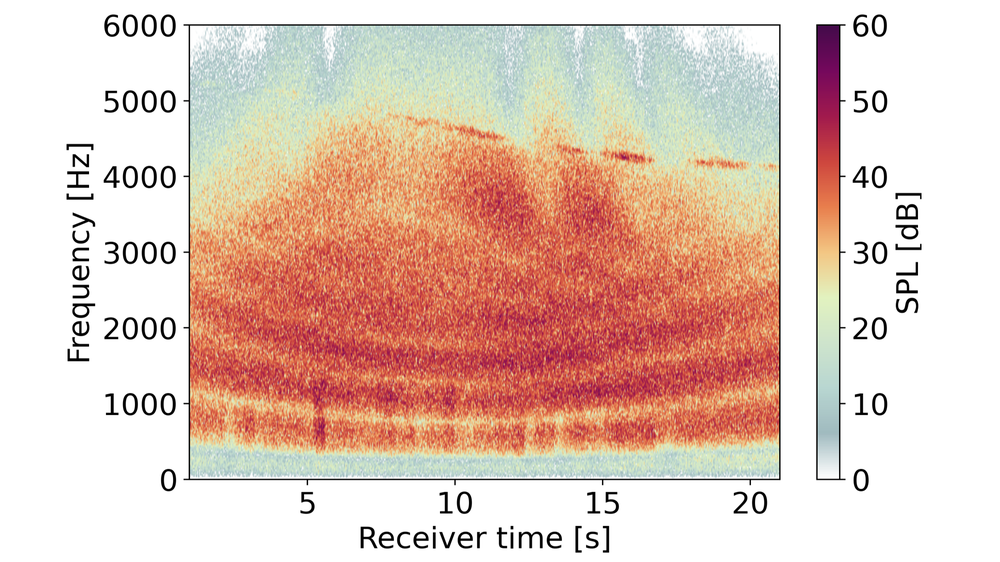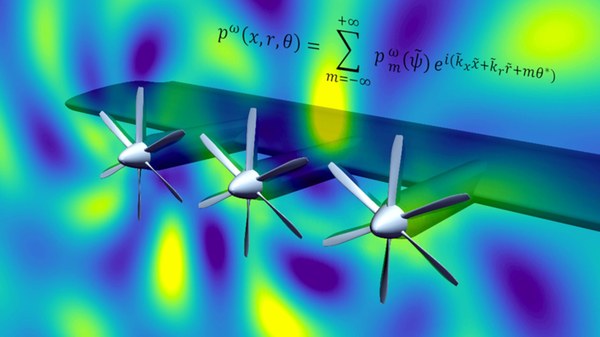The quiet future of flying
Aeroacoustic Simulation Framework
Analytical and numerical methods developed in our engine acoustics department are used to predict and evaluate engine noise. Our methods can be applied to gas turbines, open rotor concepts and fans.
PropNoise
The PropNoise simulation tool predicts the noise of turbofan and open-rotor engines.
The fast analytical methods are used in the preliminary design phase and help to explore the space of important design parameters to narrow down the acoustically favourable range. The results can be further improved with more computationally intensive numerical methods, for example by optimising the blade profiles.

VIOLIN
The VIOLIN simulation tool can be used to simulate the propagation of airborne sound sources, such as propulsion noise simulated by PropNoise, to the ground.
The tool simulates both the effect of overflight and the physical propagation of sound through the atmosphere. A typical output from VIOLIN is a time-dependent spectrum, also known as a spectrogram, which can then be auralised using the CORAL tool.

CORAL
The CORAL simulation tool uses an auralisation process to make the received sound audible to the observer.
The tool thus provides the basis for psychoacoustic studies to scientifically analyse the perception of flight and propulsion sounds by the human ear.

Connect3D
Connect3D is a software for preparing and analysing acoustic simulation results obtained with the CFD flow solver TRACE.
It includes various functionalities such as a method for acoustic mode analysis, a Ffowcs-Williams and Hawkings method and an interface to the PropNoise analysis tool.

